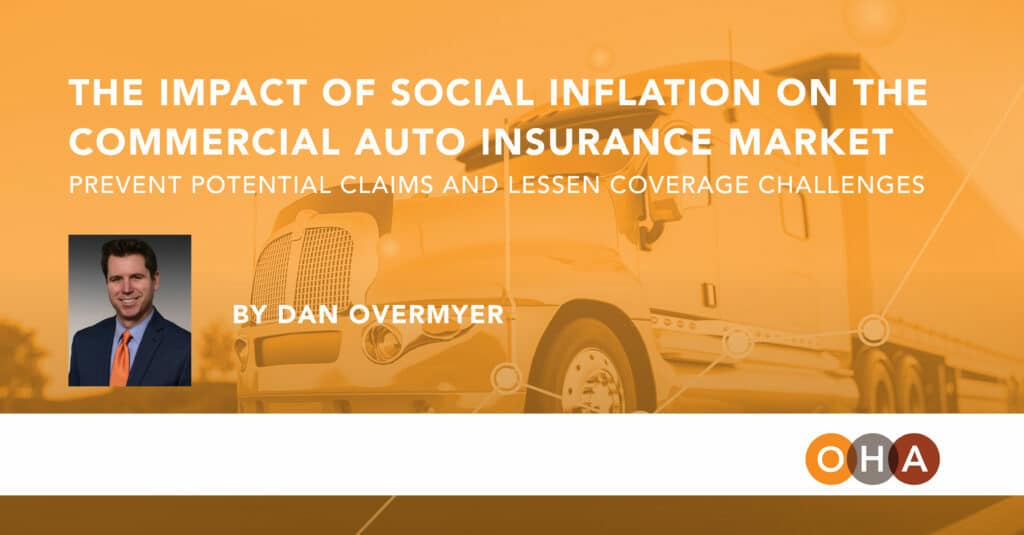
Prevent Potential Claims and Lessen Coverage Challenges
Social inflation, which refers to the rising cost of insurance claims, continues to be a growing concern within the commercial auto insurance market. And with today’s inflation affecting nearly every aspect of our lives, it’s important to understand the causes — and how to help customers respond properly.
Inflation issues can be attributed to a number of things, including increased litigation funding, tort reform challenges and deteriorating public sentiment toward corporations. Rising litigation expenses associated with social inflation can result in costly insurance claims, forcing insurers to make major payouts, which can also lead to poor loss ratios and reduced underwriting profits.
To combat losses, insurers are more likely to increase premium costs and introduce additional coverage restrictions. While these challenges occur throughout the commercial insurance space, the auto insurance segment is more vulnerable because the commercial auto market had already been unprofitable for insurers over the past decade.
According to a recent report from AM Best, commercial auto underwriters saw more than $22 billion in underwriting losses between 2011 and 2020, despite underwriters increasing commercial auto premiums. Consequently, rising social inflation issues have exacerbated the commercial auto segment’s existing profitability concerns, creating continued challenges for insurers and policyholders alike.
Looking ahead, industry experts predict this trend will continue to be a concern. As such, the majority of businesses with commercial auto exposures—regardless of their industry or vehicle class—could experience a more difficult renewal process with higher premiums, lowered capacity and stricter policy requirements or limitations.
Steps Businesses Can Take
Policyholders should consider the following measures to help prevent potential claims and minimize coverage challenges:
- Ensure adequate hiring and retention practices — Hire experienced and qualified drivers and prioritize retention with incentives for safe driving habits.
- Prioritize a culture of safety — Communicate the importance of road safety and accident prevention. Offer routine driver safety training, safety meetings and road safety resources. Reward drivers who demonstrate safe driving behaviors.
- Employ technology — Monitor road conditions, assess drivers’ behaviors and prevent accidents using technology that collects data and offers insight on maintaining safe driving operations.
- Maintain compliance — Prevent litigation and associated claims by reaching out to proper legal counsel to assess compliance requirements. Applicable requirements should be reflected within workplace policies and procedures.
- Consult a professional — Regularly communicate with a trusted insurance professional regarding proper risk management tactics and coverage solutions.
For more coverage guidance, connect with us at 614-453-4400 or info@oh-ins.com.
Dan Overmyer, CPIA, CLCS, is a partner with Overmyer Hall Associates, a property and casualty insurance agency in Central Ohio. For more information, visit oh-ins.com.